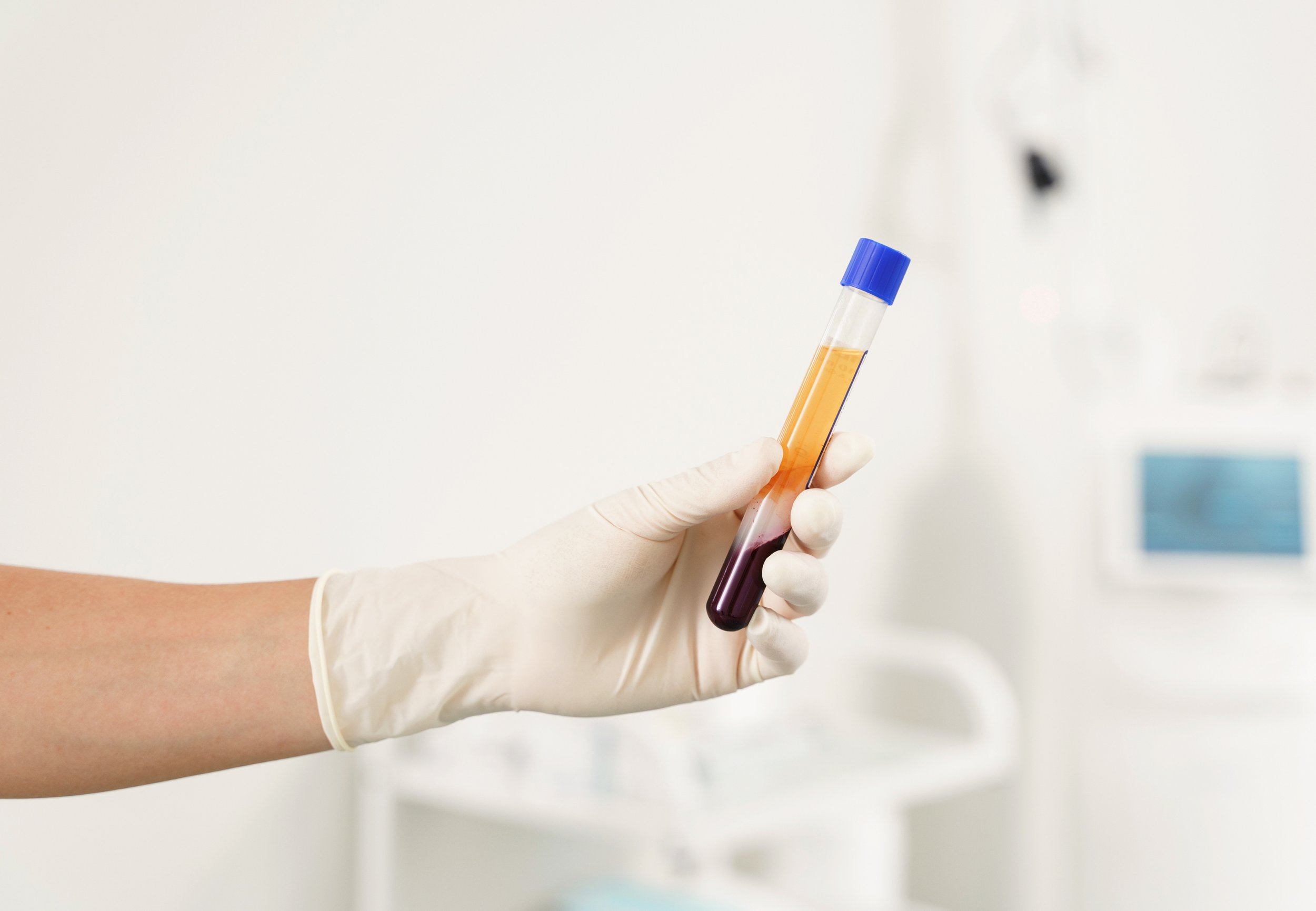
PRP Facial Rejuvenation
Wrinkles & Fine Lines | Hyperpigmentation | Under Eye Treatments
Platelet Rich Plasma
PRP (Platelet Rich Plasma) treatments are implemented to assist the body in regenerating and restoring skin quality and volume in any area of the face and neck. This treatment may also be used to lighten hyperpigmentation caused by sun damage or acne scars. The process begins with a simple blood draw. The sample is then spun in a centrifuge to separate the platelets from the red cells and white blood cells. Once your blood has gone through the spinning process, your platelets will be injected into your areas of concern. Following the injection, your platelets will reach the fibrin network and begin a cascade to release growth factors to stimulate the creation of new collagen and skin cells.
-
Platelet-rich plasma (PRP) facial rejuvenation is a non-surgical therapy designed to combat the appearance of wrinkles and improve your overall complexion with younger-looking skin. PRP injections are an essential choice for those who desire a quick, safe, and effective enhancement of their appearance.
Blood is drawn and spun in a centrifuge which separates your red blood cells from your platelet rich plasma. The plasma, which is rich in growth factors (and a some stem cells) is then injected under the skin to stimulate collagen production and new cell growth. You should begin to see initial results in about a month as new collagen forms.
-
PRP treatment is considered very safe for most people, but not recommended for patients with medical conditions affecting platelet production, as treatment won’t yield the desired results.
PRP is also not advised for those with Hepatitis C, HIV or AIDS, blood cancer or cancers of the skin in the target treatment area, or cardiovascular disease, which requires the use of blood thinners. Patients who are pregnant, nursing, or breastfeeding are also not candidates for PRP treatments.
Please inform me of any history of bleeding disorders or autoimmune disease, as these conditions may impact your candidacy. Other factors such as smoking and an unhealthy lifestyle may also impact results.
-
PRP injections are described as minimally to moderately painful. Injections are administered quickly using the smallest possible needle to decrease discomfort. Prescription strength numbing cream may also be used.
-
PRP facial rejuvenation uses a non-surgical injection process that requires minimal downtime. Treated areas of the face and neck will appear inflamed and red. Tenderness, irritation, and bruising at the injection sites are also common. However, these side effects should resolve quickly. Patients are expected to be able to return to normal activities immediately after treatment.
-
Patients should expect to be treated monthly for the first 3-4 months, and then every 4-6 months for ongoing maintenance.
Age, genetics, and platelet quality will influence a single treatment’s longevity. Typically progress can be seen for up to 3-6 months after treatment.
-
Progress should be seen within several weeks of your initial treatment, although PRP may take between four and six months to see measurable results. Individual results may vary.
-
Avoid exercising, saunas, steam rooms, and sun exposure for 24 hours after treatment. It is okay to take a warm (not hot) shower after treatment. It is also recommended to avoid alcohol and blood thinners (unless medically necessary) to avoid the risk of bruising.


